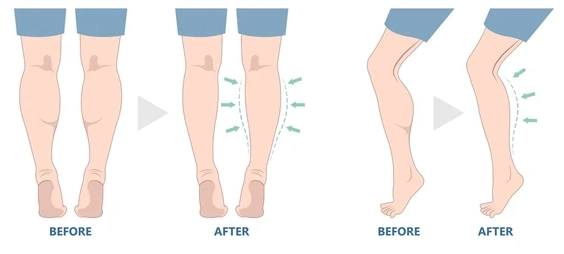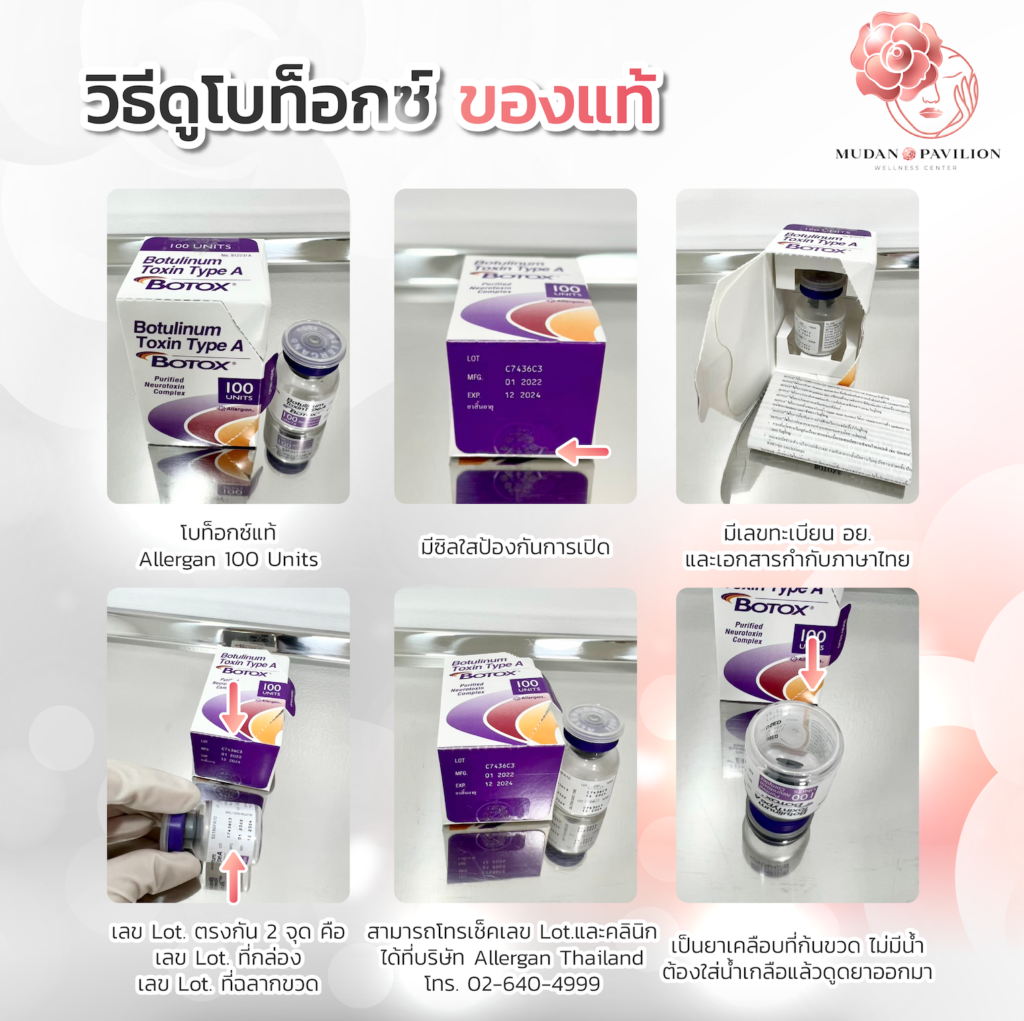Botox for calf reduction vs. calf liposuction These are two methods that help make your legs look slimmer, but they are suitable for different problems. Botox helps reduce large calf muscles from heavy use, such as walking a lot or standing a lot, making your legs look slimmer without surgery. As for calf liposuction, it is suitable for people who have a lot of fat accumulated in their calves and want to get rid of it directly. The results of both methods are clearly different. This article will introduce you to the advantages and disadvantages of each type to help you choose the one that is most suitable for you.
Botox for calf reduction VS calf liposuction
- What causes big calves?
- What is Botox for calf reduction? Who is it suitable for?
- What is calf liposuction? Who is it suitable for?
- What is the difference between calf botox and calf liposuction?
- Which is better: Botox for calf reduction or calf liposuction?
- How long does Botox last for calf reduction? Do I need to get repeated injections?
- Is calf liposuction permanent? Do I need to do it again?
- Precautions before deciding to reduce calves with various methods
- Precautions and self-care after the procedure
- summarize
What causes big calves?
The calf is made up of fat, muscle and bone. The problem of large calves can be caused by many factors, as follows:
- age: As we age, muscle mass tends to decrease, but fat stores increase, which changes the shape of the calves.
- Heredity:: It is a major cause of large calves. It is often found in families with large body structures. The large calves may be caused by muscle tissue in the legs or fat accumulation.
- Fat accumulation: Eating unhealthy foods such as fried foods, greasy foods, and sweets causes the body to store fat in various parts of the body, including the calves.
- Exercise:: Activities that directly use the calf muscles, such as hill running, jumping rope, cycling, or weight lifting that focuses on the calves, make the calf muscles larger.
- Weight gain: As your weight increases, your calf muscles have to bear more weight, resulting in stronger and larger muscles.
- daily routine: Walking, standing for long periods of time, or wearing high heels regularly causes the calf muscles to work harder and become larger.
- Symptoms of edema This is another reason why the calves look bigger because fluid accumulates in the tissues in that area, causing swelling and making the calves larger than normal.
What is Botox for calf reduction? Who is it suitable for?

Botox for calf reduction (Calf Downsizing) or calf boning is the injection of Botulinum Toxin directly into the calf muscles. Botox will inhibit the function of the nerves that command the muscles to contract. As a result, the calf muscles will relax and temporarily stop working. This makes the large calf muscles smaller, making the calves slender and beautiful without lumps. It also helps to fix the problem of prominent calf muscles or bulging calves, as well as helping to build confidence for that person.
Botox injections to reduce calves are suitable for people who have large calves due to genetics or daily behaviors, such as exercising, walking, standing, or wearing high heels for a long time. It is also suitable for those who want to reduce the size of their calves to be beautiful and slender by inhibiting the function of the nerves that stimulate muscle contractions, causing them to relax and temporarily stop working, which helps make the calves smaller and the legs look slimmer. However, the results of Botox injections to reduce calves are not permanent. They will last for 4-6 months. It is suitable for those who want to temporarily adjust their body shape, including those who want to increase their confidence in their appearance to promote their careers, such as models. It is also an option for those who want to fix the size of their calves without surgery, reducing the recovery time, and seeing results immediately after the procedure.
What is calf liposuction? Who is it suitable for?

Calf Liposuction is a treatment that removes excess fat that accumulates in the lower calves. The doctor will use a machine to release energy to break up the accumulated fat into liquid. Then, a small incision will be made and a tube will be inserted to suck out the fat. As a result, the calves that were too large will become smaller, slimmer, and firmer.
Calf liposuction is an alternative to correct large calves caused by genetics or accumulated fat. It is suitable for those who have too much fat in the calf area and want their legs to look slimmer, as well as those who have tried exercising and controlling their diet but still have accumulated fat. It is also suitable for those who are healthy, do not have diseases that are obstacles to surgery, and have skin in the calf area that is elastic, making the skin after liposuction firm and smooth. It is also an alternative for those who want to see results quickly and have a clear change.
What is the difference between calf botox and calf liposuction?
| Botox for calf reduction | Calf liposuction | |
|---|---|---|
| Working principle | It is an injection of botulinum toxin into the gastrocnemius muscle to relax the muscle. | It is a procedure that uses an energy-delivering device to break up accumulated fat into liquid. Then, a small incision is made and a tube is inserted to suck out the fat. |
| Duration of production | 15-30 minutes | 1-3 hours |
| Suitability | Big calves caused by muscles | Big calves caused by accumulated fat |
| Duration of results | The calves will start to shrink in size within 2-4 weeks and the results will be clearly visible in about 1-3 months. | After liposuction, results are immediate, but there will be swelling that will gradually subside and you will see slimmer calves within 1-3 months. |
| Permanence | The results are not permanent, lasting about 4-6 months and need to be repeated. | Provides permanent results without new fat accumulation. |
| Recovery period | No need to waste time recovering | Recovery time is approximately 1-2 weeks. |
| The results obtained | Helps reduce the size of the calf muscles and makes the calves slimmer and smaller in size. | It helps to clearly reduce and solve the problem of large calves. It helps to adjust the shape of the calves to be more slender and proportionate. |
Which is better: Botox for calf reduction or calf liposuction?
For those who have large calf problems caused by muscles and want to adjust the size of the calves to be slender without having to undergo surgery or waste time recovering, Botox injections to reduce calves are a suitable choice. For those who have large calf problems caused by accumulated fat and want permanent results, including seeing clear results, calf liposuction is a method that meets the needs better. Therefore, both methods have advantages, depending on the choice and purpose of each person.
How long does Botox last for calf reduction? Do I need to get repeated injections?
Botox injections to reduce calves are a method of injecting substances directly into the calf muscles. Botox will last for about 4-6 months. However, the duration of the results may vary depending on several factors, such as the product brand, the amount used for injection, and the use of each person's muscles. To maintain the results, the injections should be repeated every 4-6 months. However, before each repeated injection, the symptoms should be evaluated by a doctor for safety, good results, and to reduce the risk of possible side effects.
Is calf liposuction permanent? Do I need to do it again?
Calf liposuction is a procedure to remove excess fat that accumulates in the lower legs. The doctor will use an energy-delivering device to break up the fat into liquid. After that, a small incision will be made and a tube will be inserted to suck out the fat. This method is considered a permanent solution to the problem of large calves. Therefore, it is not necessary to repeat it. However, the long-term results depend on self-care after surgery, weight control, and daily behavior.
Precautions before deciding to reduce calves with various methods
Before deciding to reduce calves, whether by botox injection or liposuction, you should consider carefully. Because both methods have precautions and risks that you must be aware of. In order to get the best and safest results, there are guidelines as follows:
- Evaluation of calf problems Knowing the cause of large calves is important before choosing a treatment method. If the assessment is incorrect and the inappropriate method is chosen, it may not be effective or cause side effects.
- Choosing a clinic and a doctor performing the procedure should be certified by the Ministry of Public Health and can be verified. The equipment used should be clean, modern, and safe. The doctor performing the procedure should be a specialist with expertise and experience.
- Inform your doctor about your medical history, chronic diseases, and medications you are taking.
- Avoid alcohol and smoking at least 1 week before the procedure.
- Avoid certain medications that affect blood clotting, such as NSAIDs, vitamin E, and fish oil.

Precautions and self-care after the procedure
In the case of botox injections to reduce calves
- Avoid massaging or pressing the injection area for at least 12 hours.
- Avoid activities involving heat, such as saunas, sunbathing, or laser treatments in the injection area for at least 3–7 days.
- Avoid alcohol and smoking for at least 3 days - 2 weeks as advised by your doctor.
- Avoid certain foods, such as pickled foods, spicy foods, or very hot foods, for the first 1–2 weeks.
- Move your calf muscles in the injection area for about 30 minutes after injection to help the Botox work better.
Case of liposuction to reduce calves
- Strictly follow your doctor's instructions, including wound care and wearing a compression garment.
- Avoid strenuous exercise for the first month.
- Do not allow the wound to get wet until it is completely dry and the stitches are removed.
- Avoid drinking alcohol and smoking for at least 2 weeks–1 month.
- Drink plenty of fluids to help reduce swelling and help your body recover faster.
- Walking should be started immediately after surgery to prevent blood clots.
summarize
Large calves can be caused by many factors, such as age, genetics, accumulated fat, daily habits, and edema. Popular solutions include botox injections to reduce calves, which involves injecting botulinum toxin into the calf muscles to relax them. This is suitable for those with large calves from muscles who want to temporarily adjust their shape without surgery. As for calf liposuction, it is a method that helps to get rid of excess fat using a tool that releases energy to break down the fat and then sucks it out. This is suitable for those with accumulated fat and who want clear and fast results. Both methods have their own advantages and limitations. Therefore, for safety and results that meet your goals, you should get an evaluation and consult a specialist before deciding to have the procedure.






